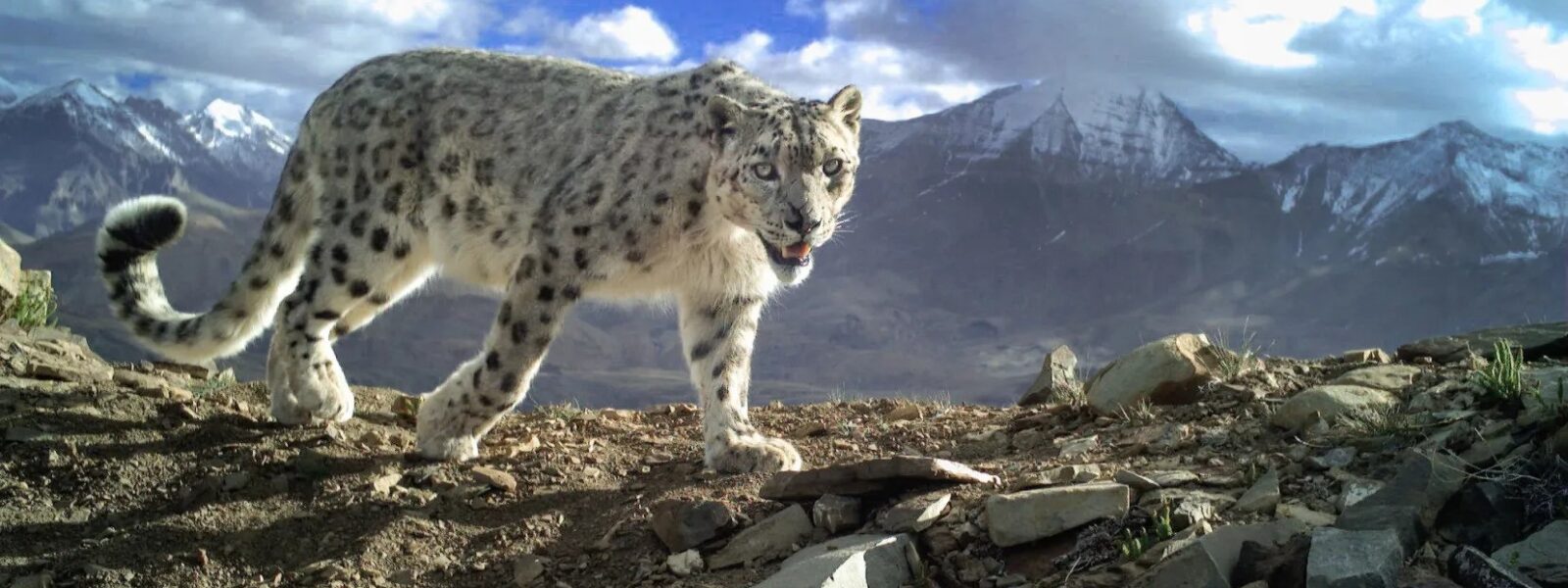Ladakh, nestled high in the Himalayas, is home to one of the most elusive big cats—the snow leopard. Known as the “Ghost of the Mountains,” snow leopards are rarely spotted due to their shy nature and the rugged, remote terrain they inhabit. However, snow leopard conservation treks in Ladakh offer a rare opportunity to witness these majestic creatures in their natural habitat, while also contributing to their preservation. This blog post will guide you through everything you need to know about embarking on a snow leopard conservation trek in Ladakh, from what to expect to the impact on wildlife conservation.
Why Ladakh is the Best Place for Snow Leopard Conservation Treks
Ladakh’s Unique Landscape and Wildlife Diversity
Ladakh, with its starkly beautiful landscapes, high-altitude deserts, and towering peaks, provides the perfect setting for snow leopard treks. The region’s climate and terrain create an ideal habitat for a diverse range of wildlife, including ibex, blue sheep, Tibetan wolves, and of course, the snow leopard. Most snow leopards in Ladakh live in Hemis National Park, which is considered one of the best locations for spotting them.
Given that the snow leopard is an endangered species, these treks serve a dual purpose—offering adventure while promoting wildlife conservation. By participating in these treks, you’ll not only experience Ladakh’s breathtaking beauty but also play a part in protecting one of the world’s rarest big cats.
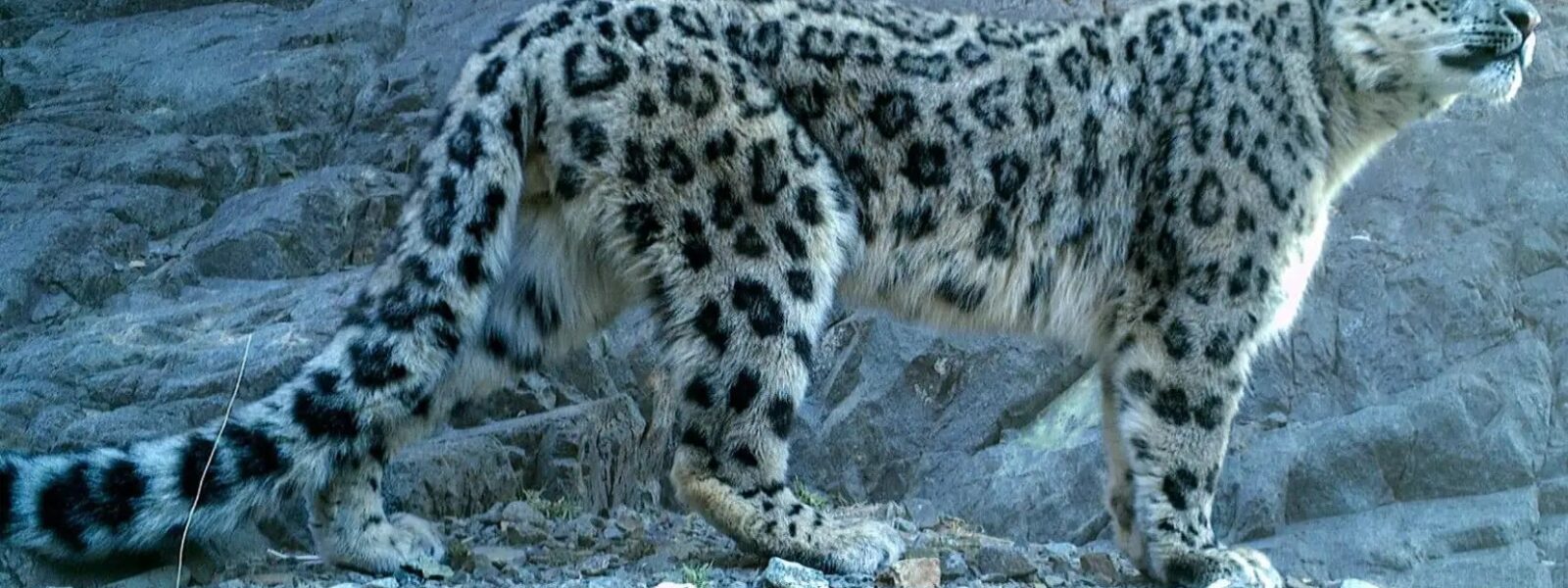
The Role of Hemis National Park in Snow Leopard Conservation
Located in eastern Ladakh, Hemis National Park is the largest national park in India and a global hotspot for snow leopard sightings. Thanks to conservation efforts, the park has become a haven for snow leopards, making it the focal point for most snow leopard conservation treks. Winter, when snow blankets the region and the leopards descend to lower altitudes, offers the best chance of sightings.
Many conservation programs in Hemis National Park are community-driven, ensuring that local populations benefit from tourism while actively participating in the protection of snow leopards. By booking a snow leopard trek in Hemis, trekkers are directly supporting these initiatives.
What to Expect on a Snow Leopard Conservation Trek
Guided Snow Leopard Tracking Expeditions in Ladakh
A snow leopard conservation trek in Ladakh is not your typical adventure holiday. These guided treks are designed to provide a deeper understanding of conservation efforts, local ecosystems, and wildlife behavior. Expert local guides, who are familiar with the snow leopard’s movements, lead the treks. These guides are often from nearby villages and work in collaboration with conservationists to ensure the safety of both trekkers and wildlife.
The treks typically last 7-10 days, with daily excursions into potential snow leopard habitats. Since snow leopards are elusive, the experience can sometimes be a waiting game, but the thrill of tracking one of the rarest big cats is unparalleled. Along the way, trekkers also get the chance to observe other high-altitude wildlife such as blue sheep and golden eagles.
“The anticipation of spotting a snow leopard kept us on our toes throughout the trek! Our guide Tsering knew the landscape like the back of his hand. On the third day, we spotted a snow leopard resting on a ridge. It was a magical moment.”
– Julia Evans, Wildlife Photographer, USA
Best Time to Spot Snow Leopards in Ladakh
The best time to embark on a snow leopard conservation trek in Ladakh is during the winter months, from November to March, when the snow leopards come down to lower altitudes in search of prey. The harsh winter conditions, while challenging, increase your chances of seeing a snow leopard as their paw prints become visible in the snow.
If you’re planning a trip during this period, it’s crucial to prepare for the cold. Temperatures can drop to -30°C, so packing appropriate gear, including thermal clothing and sleeping bags rated for extreme temperatures, is essential.
Conservation and Responsible Tourism in Ladakh
The Importance of Sustainable Tourism in Snow Leopard Conservation
Snow leopard conservation treks are an excellent example of sustainable tourism, where visitors can enjoy an enriching experience while supporting the conservation of endangered species. Ladakh has embraced eco-friendly tourism models, ensuring that treks are carried out with minimal environmental impact. For example, most trek organizers provide composting toilets, biodegradable waste disposal, and ensure that campsites are left untouched by human activity.
By participating in these treks, you’re directly contributing to snow leopard conservation efforts. Part of the income generated from the treks is reinvested into local conservation programs, anti-poaching initiatives, and habitat restoration projects.
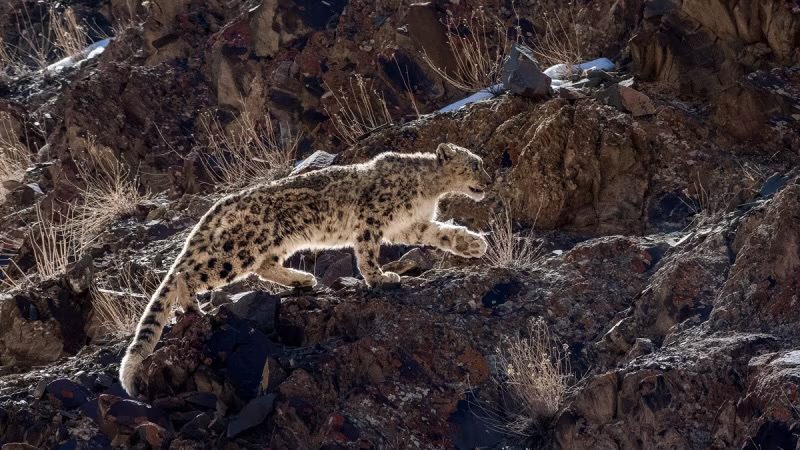
How Local Communities Support Snow Leopard Conservation
The snow leopard’s survival is intertwined with the well-being of Ladakh’s local communities. Many snow leopard conservation programs are community-led, with villagers acting as trackers, guides, and conservation advocates. By involving locals in wildlife tourism, these treks provide alternative income sources for herders who might otherwise be in conflict with snow leopards due to livestock predation.
Programs like the Snow Leopard Conservancy India Trust work closely with these communities to reduce human-wildlife conflict through predator-proof livestock enclosures and by compensating herders for livestock losses. This collaborative approach has helped foster a positive relationship between snow leopards and Ladakh’s people.
“I loved how our trekking experience not only focused on spotting snow leopards but also included conversations with local villagers. Their insights into conservation and how they coexist with wildlife were eye-opening.”
– Marco Santini, Ecologist, Italy
Popular Snow Leopard Trekking Routes in Ladakh
Trekking Routes through Hemis National Park and Neighboring Areas
While Hemis National Park is the most well-known location for snow leopard treks, there are several other trekking routes that offer excellent opportunities for wildlife sightings. Some of the popular routes include treks through Rumbak Valley, Markha Valley, and Matho Village.
These routes take you deep into snow leopard territory, offering stunning views of Ladakh’s snow-capped mountains and rugged landscapes. Along the way, you’ll encounter high-altitude fauna and flora, as well as ancient Buddhist monasteries, adding a cultural dimension to the adventure.
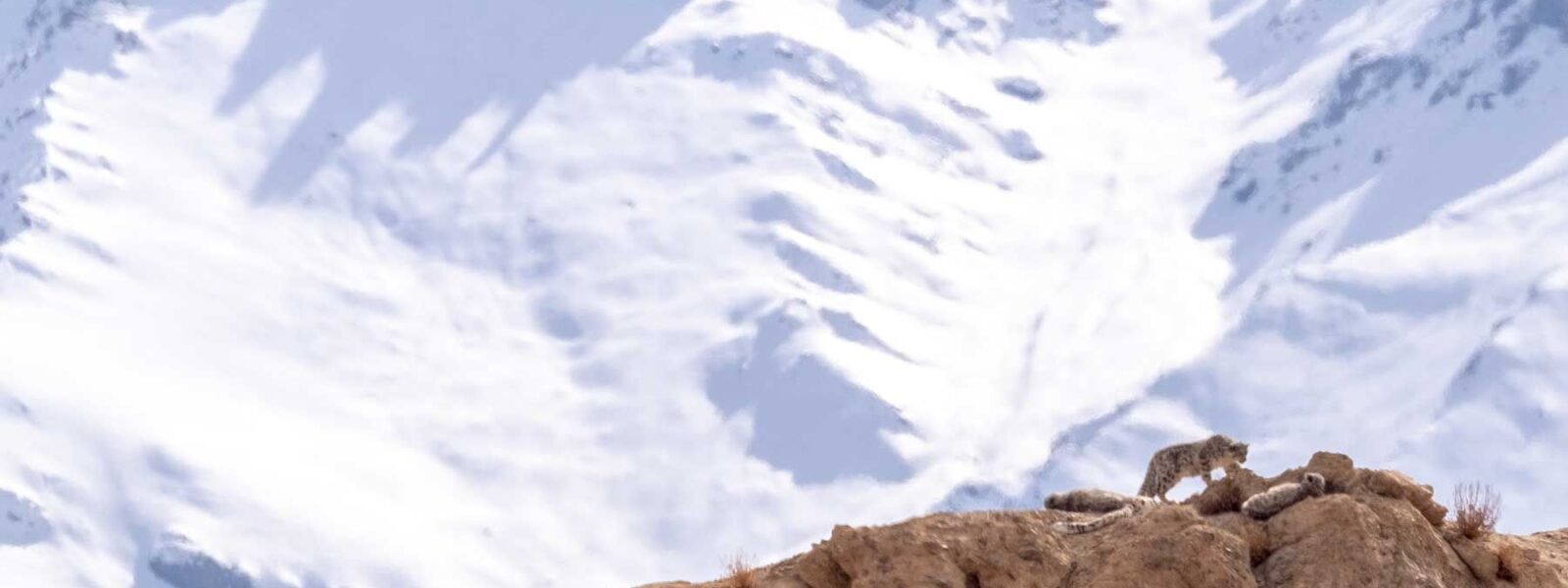
The Role of Trekking Permits and Guidelines
Before embarking on a snow leopard conservation trek, it’s essential to obtain the necessary permits, especially for trekking in protected areas like Hemis National Park. These permits ensure that conservation guidelines are followed, including maintaining a safe distance from wildlife, minimizing noise, and adhering to designated trekking routes to avoid disturbing snow leopard habitats.
Tips for a Successful Snow Leopard Conservation Trek
What to Pack for a Snow Leopard Trek in Ladakh
Packing the right gear is critical for a successful snow leopard trek, especially considering the cold, high-altitude conditions. Here’s a checklist of essential items to bring:
| Item | Purpose |
|---|---|
| Thermal base layers | To keep warm in sub-zero temperatures |
| Windproof jacket | Protection against icy winds at high altitudes |
| Sturdy trekking boots | For navigating rocky, snowy terrain |
| Binoculars | To spot snow leopards from a distance |
| Sunscreen and sunglasses | To protect against the strong sun at high altitudes |
| Water purification tablets | To ensure safe drinking water during the trek |
Hiring Local Guides for the Best Experience
Hiring a local guide not only enhances your chances of spotting a snow leopard but also supports the local economy. These guides have an intimate knowledge of the terrain and snow leopard behavior, which is invaluable in tracking the elusive big cats. Furthermore, by choosing local guides, you’re contributing to the livelihoods of the communities that play a crucial role in snow leopard conservation.

“Our local guide, Norbu, had an incredible ability to track wildlife. Thanks to him, we not only saw a snow leopard but also learned so much about the conservation efforts in Ladakh.”
– Aisha Ahmed, Travel Blogger, UK
The Impact of Snow Leopard Conservation Treks on Wildlife Preservation
How Trekking Supports Snow Leopard Conservation Efforts
Snow leopard conservation treks directly contribute to wildlife preservation in Ladakh. A portion of the trek fees goes toward funding conservation programs that focus on snow leopard research, anti-poaching patrols, and habitat protection. Additionally, these treks raise awareness among tourists, creating a ripple effect of support for wildlife preservation across the globe.
Promoting Eco-Friendly Travel to Protect Ladakh’s Wildlife
Eco-friendly travel practices, such as minimizing waste, respecting wildlife, and supporting local communities, are essential in protecting Ladakh’s delicate ecosystems. By choosing eco-conscious trekking operators, travelers can ensure that their adventures leave a positive, lasting impact on the region’s wildlife and environment.
Conclusion: Embark on a Life-Changing Snow Leopard Conservation Trek in Ladakh
A snow leopard conservation trek in Ladakh is more than just an adventure—it’s a journey that combines thrilling wildlife encounters with a meaningful contribution to conservation efforts. By embarking on this trek, you’ll have the chance to witness one of the world’s most elusive creatures in its natural habitat, while also supporting the local communities and programs that are working tirelessly to protect it.
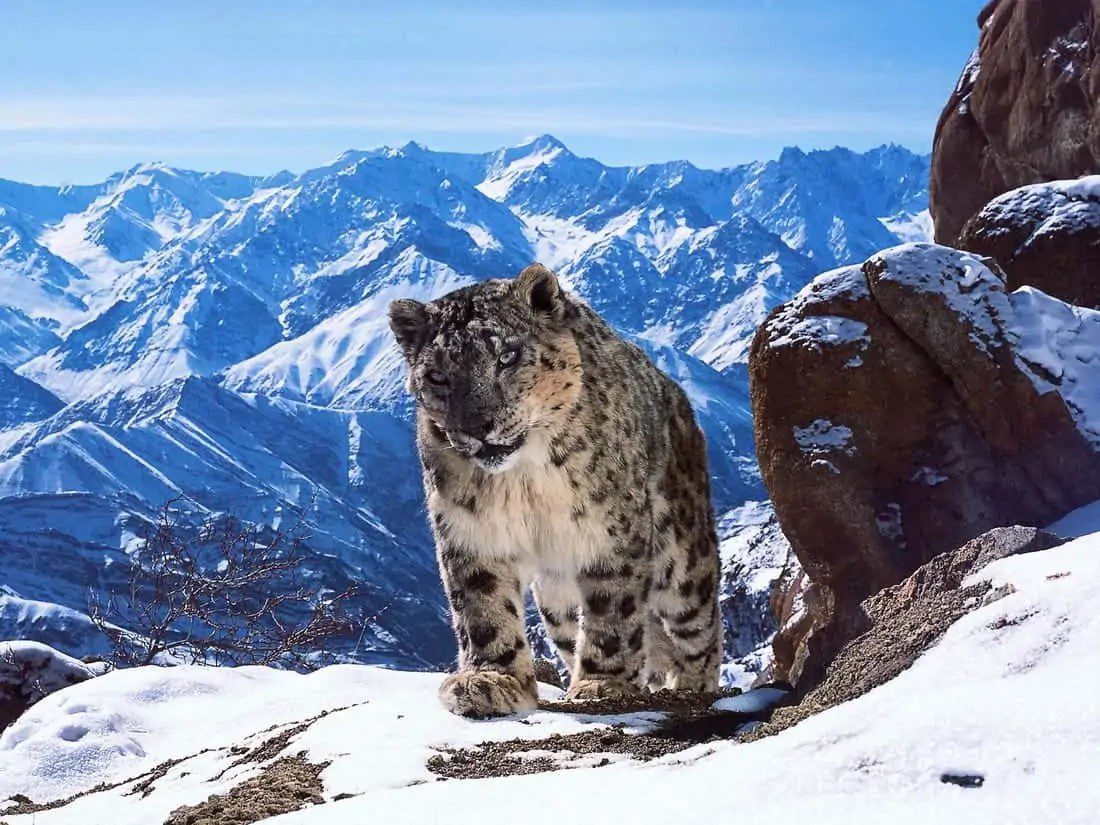
Whether you’re a seasoned trekker or a wildlife enthusiast, this is a once-in-a-lifetime experience that will leave you with lasting memories and the satisfaction of knowing you’ve played a part in conserving one of nature’s most extraordinary species.
“This trek was a dream come true! Seeing a snow leopard in the wild is something I’ll never forget. The fact that we were contributing to conservation made it all the more special.”
– Lars Johansson, Adventure Enthusiast, Sweden
FAQs
What is the best time for snow leopard trekking in Ladakh?
The best time for snow leopard trekking is between November and March, during the winter months when snow leopards descend to lower altitudes in search of prey.
How difficult are snow leopard conservation treks?
These treks are moderately difficult due to the high altitude and cold conditions. However, they are suitable for most people with a reasonable level of fitness.
How do snow leopard conservation treks benefit local communities?
Conservation treks provide income for local communities, create job opportunities, and promote sustainable tourism. They also support conservation efforts that protect livestock and wildlife alike.
Do I need a permit for snow leopard treks in Ladakh?
Yes, trekking in protected areas like Hemis National Park requires permits, which help regulate tourism and protect wildlife habitats.
Can I see other wildlife during the trek?
Yes, in addition to snow leopards, you may spot blue sheep, ibex, Tibetan wolves, and a variety of birds such as golden eagles and lammergeiers.
Are snow leopards dangerous to humans?
Snow leopards are generally shy and avoid humans. Sightings are typically from a safe distance, and they do not pose a threat to trekkers.

